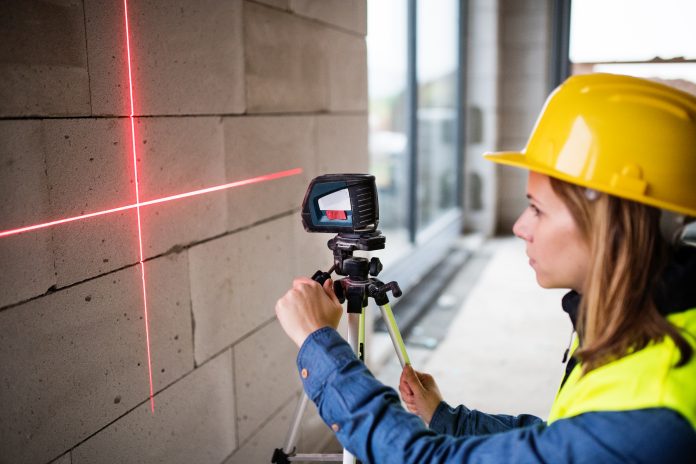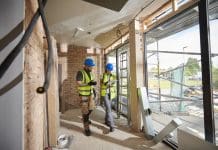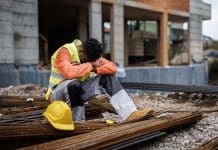Brandon Oliveri-O’Connor, VP of EMEA, Procore, considers why diversity and inclusion are important to construction, what businesses should and can be doing to be more inclusive, and how companies can attract and retain talent in the best way moving forwards
The current state of diversity in construction shows just how much work there is to do.
In its recent Diversity and Inclusion in Construction report, the CIOB showed that women only made up 12.3% of the UK’s construction workforce in 2019. With BAME representation as low as 5-7%, dropping to 1% within more senior industry roles. Whilst in 2018, the OutNext / PwC Out to Succeed survey found the construction industry had the third worst image out of all industries as an LGBTQ+ employer.
In advocating for change, the CIOB report dismisses the idea that construction’s push to be more accepting and less discriminatory is a nice-to-have, saying how “[it] is not so much a fashionable cause as it is a matter of individual business survival.”
After all, the business incentives behind diversity are well known, with McKinsey research showing companies in the top quartile for diversity on executive teams being 25% more likely to have above-average profitability than those in the lowest quartile.
Diversity is a solution for the construction industry, not a problem
But for the construction industry, the argument is even more persuasive as to why diversity should be seen as a solution, rather than a problem. And that’s because it holds the key to solving one of the biggest issues currently on our collective plate: the skills shortage.
We’re all aware of the perfect storm on the horizon, with more skilled, older professionals leaving the industry, and fewer younger talent coming in. In fact, 32.5% of people working in construction are aged over 50, whilst only 10% are between the ages of 19 and 24. Such a lapse risks leaving construction even more out of touch, and unable to deal with the challenges of the years ahead.
Diversity offers construction a unique opportunity to transform the construction industry. It starts with bringing in talent, but it can lead to mass overhauls in its processes and how it’s perceived as an industry so that it no longer lags behind the competition, but leads from the front.
We won’t see the statistics right themselves in the next year, but 2022 is where the hard work can start.
1. Begin the perception shift
It is one thing to encourage diverse groups to enter construction, but this will only do a fraction of the job. What is far more motivating is seeing diversity flourish.
Kate Waters, President of WACL (Women in Advertising and Communications Leadership) recently said that “if we want to develop diverse leadership teams made up of the people most capable of leading for change, we need to start by de-gendering the traits that define what “great” looks like.”
What does ‘great’ look like in construction? For many, it will be based on the evidence of the statistics they are seeing, which as we can see from the CIOB report is predominantly white and male, and it is ageing. Not a good look, when for millennials and Gen Z, diversity remains a considerable personal concern.
Without doing much to address these shortfalls, an industry such as construction will only become increasingly unpalatable for early to mid-career professionals and trainees deciding on their career.
A catalyst for this perception change is for construction to modernise its ways of working, and as a result, the roles available. One way of doing this is to continue to embrace technology; by shedding old-fashioned processes and bringing in digitalization.
This way, those with skills, appetites and ambitions in digital, or simply beyond the construction site, no longer perceive construction as limiting, and the net is cast wider than ever before.
2. Stay flexible
Covid hasn’t brought much in the way of positives, but one area it’s undoubtedly improved is the prospect of flexible and hybrid working. Despite its reliance on on-site presence, construction shouldn’t be excluded from this.
Last year’s World Economic Forum survey showed that two-thirds of people want to continue to work flexibly when the COVID-19 pandemic is finally over. Whilst almost a third said they would consider looking for another job to their current one to meet this wish.
Companies like Spotify took an early lead on changing how they would work post-Covid, with incentives such as Work from Anywhere, meaning an employee can choose the city or country they work from.
There’s nothing to say that construction can’t follow suit and lean into the employer-employee equilibrium the pandemic has brought about.
A workplace that is not determined by how, where or when a person works means those with considerations such as childcare, accessibility or healthcare will view your business and the industry as a viable option.
Construction is still seen as an on-site job by many, so people don’t give it a second thought if they feel it is incompatible with their circumstances. But by being flexible, and wanting to continue to evolve, construction can be somewhere people feel confident in bringing their whole selves to work.
3. Measure what you treasure
If the construction industry is going to keep this fight for greater diversity going, it needs to go one step further than the McKinsey report and start making its own business case.
It can do this by producing focussed statistics that show the positive impact a more diverse, inclusive workforce can have on construction and set a template for others to follow.
Our industry has always suffered from an outdated relationship with data, but diversity can be the catalyst for this to change.
By bringing projects online, and having one single, accessible source of truth, we can begin to take a more accurate temperature check on how diversity is changing our industry for the better. It can help us monitor all wins, big and small, in the construction business case for diversity and build a roadmap for continued progress.
Setting quotas is a sure-fire way to turn the dial on poor diversity statistics too. Take global construction company Multiplex who are aiming for woman-led teams for 10% of their projects and 50% of all graduate intakes to be female this year. Whilst in Australia, the state of Victoria is now aiming for women to make up 35% of management, supervisor and specialist labour positions.
Accurate data can show teams and stakeholders how these quotas are progressing, and whether they’re even ambitious enough. It gives us the autonomy to remain truly progressive.
More progress on the horizon
However steep our improvement needs to be, we should still make time to celebrate the progress being made. To celebrate the wins and understand what a communal effort this is.
The launch of the CIOB charter was a considerable step in identifying the problem, and now we should make a collective effort to sign up to their call for change.
We should also take time to celebrate those individuals and companies pushing for progress. Gilbert-Ash for instance, who won the Best Gender Initiative at the 2020 Northern Ireland Equality & Diversity Awards, and whose managing director Raymond Hutchinson was made an OBE for services to construction and diversity and inclusion.
We must look at opportunities to learn and engage too. March sees Women in Construction Week; an important moment for the industry to demonstrate its allyship and give voice to female figures in a male-dominated business.
Whilst partnerships such as the one between Offsite Alliance and Building People show us the collective clout from sharing our networks and insights.
As for Procore, what progress we’ve made from our Women in Construction programme and Culture Academy, we’re scaling up by increasing our outreach. In the US, this has taken the shape of increasing our outreach and building partnerships with historically Black colleges and universities (HBCUs), Hispanic-serving institutions (HSIs), and others serving people from minority backgrounds. Whilst we recently hired Procore’s first-ever C-level female executive, Pat Wadors.
But we recognise that the task is far from done. Improving diversity is a journey, not a destination. Yet if we collectively recognise its power as a solution, and stop seeing it as a problem, then we can truly start to build something special.















The first thing that needs to happen is that white men need to stop treating their “diversity” representing colleagues with outright contempt. I’m a woman working on the technical side of construction and I’ve been called names to my face by male colleagues, assaulted multiple times, threatened, talked down to, had access to my personal phone number abused (everything from allowing their WAGs to directly send me threatening messages when I’m not even in the same country, to sending me ominous messages well outside working hours, with demands that I respond immediately). And the second I try to file a complaint, they close ranks and protect each other… and none of that is even touching on the pay disparities. White men in this industry have scathing contempt for anyone who isn’t them… and it makes me sick to my stomach, having to work in such an absolutely abusive environment.